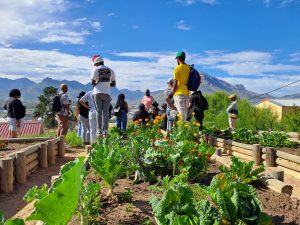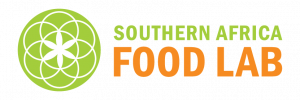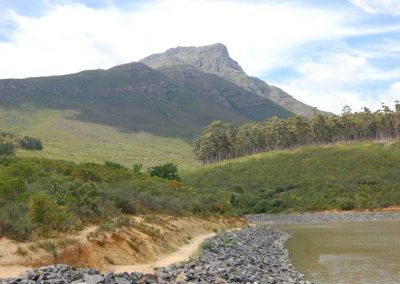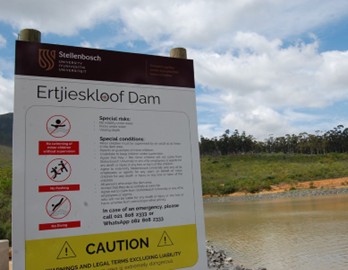Sustainable Development
at STELLENBOSCH UNIVERSITY
Sustainability contributions
SDG 15: Life on Land
SDG 15
Life on Land
SU has a long history of contributing significantly to the conservation of life on land (SDG 15) and supports the African Union’s Goals 7 and 6, which focus on creating environmentally sustainable, climate-resilient economies and promoting the blue economy for accelerated economic growth. Our interdisciplinary efforts in conservation biology, sustainable agriculture, wildlife economies, and climate research collectively contribute to protecting ecosystems for sustainable development – and building resilience to climate change across land and marine environments.

Goal 6

Goal 7
National protection for Biodiversity in South Africa
South Africa is signatory to the Convention on Biological Diversity (CBD) and is committed to the implementation of a national strategy to conserve plants that aligns with the Global Strategy for Plant Conservation (GSPC). Much of this work is driven by South African National Biodiversity institute (SANBI) and the national Department of Environmental Affairs (DEA).
Biodiversity Management at Stellenbosch University
SU’s campuses lie within agricultural landscapes in the Cape Floral Kingdom, one of the world’s great centres of terrestrial biodiversity. The area was declared a UNESCO World Heritage Centre in 2004 and has been called the world’s ‘hottest hot spot’ for plant diversity and endemism. The International Union for Conservation of Nature (IUCN) has designated it as a World Centre of Plant Diversity as it contains nearly 20% of the continent’s flora in less than 0.5% of Africa’s surface area. To this regard SU stands as an active biological custodian to the region and in various capacities facilitates the protection of the Kingdom.
SU Facilities Management division employs its Environmental Sustainability Team to oversee various initiatives on our journey to a Net-Zero Campus by 2050. The stewardship of Life on Land is a top priority in line with the Biodiversity and Land Management theme in our Environmental Sustainability Plan (ESP), which guides the work to preserve and conserve our rich biodiversity in and around our campuses.
Supporting land ecosystems through education
SU has a number of diverse centres that act and operate towards conservation research and protection of our landscapes. Key contributors in research and degree programmes towards sustainable life on land include:
- The Centre for Invasion Biology (CIB) tackles biological invasions threatening biodiversity and ecosystems.
- The Faculty of AgriSciences (FAS) develops sustainable farming, conservation ecology, and forestry practices that maintain biodiversity, enhance soil health, and build crop resilience.
- The School for Climate Studies (SCS) integrates climate research and policy, focusing on adaptation and sustainable development.
- The Centre for Sustainability Transitions (CST) is an interdisciplinary entity that produces research and graduates in Sustainable Development at the postgraduate level.
Showcasing our Efforts – Events about sustainable use of land, including tourism
SDG 15
Life on Land
Stellenbosch is a popular tourist destination in South Africa, attracting not only students and academic visitors to the town. It offers a rich wine and culinary tradition in addition to its natural beauty, sporting activities, and historical attractions.
Our Custodianship
SU collaborates with the local municipality and communities to maintain shared land ecosystems in and around our campuses.
 Stellenbosch Mountain and Coetzenburg
Stellenbosch Mountain and Coetzenburg
SU collaborates with the local municipality and communities to maintain shared land ecosystems in and around our campuses. SU owns and manages the Coetzenburg area on Stellenbosch Mountain according to conservation principles. This area borders on the Jonkershoek Nature Reserve Protected Area, a World Heritage site. As a custodian of land that bordering on the Jonkershoek Reserve, SU forms part of the Advisory Committee working with Cape Nature, responsible for biodiversity conservation in the Western Cape. Activities include alien plant control, fire control (and the water catchment area), the upkeep of trails, roads, and fencing, tourism promotion, security, as well as environmental awareness and capacity building activities with local schools and other stakeholders in the area.
In addition to the preservation and conservation of the flora and fauna in the larger conservation area, the University also manages the Duthie Nature Reserve bordering campus with its pristine Fynbos and endangered Paintbrush Lillies, as well as the Koloniesland area bordering the Eerste (First) Rivier, forming part of a historial heritage site. The Eerste and Krom Rivers flow through the historical town and campus, and are co-managed as ecological green areas with the local authorities and private landowners, contributing to invasive species and fire control. These areas are important green spaces, providing water to campus and the community, cooling the campus down and contributing to the sustainability of the campus. SU upgrades the trials and facilities for the enjoyment of locals and visitors alike (see page 24/25).
Conserving endangered fauna and flora
The South African Environmental Observation Network (SAEON) is a long-term environmental observation and research facility of the National Research Foundation (NRF). It was established by the Department of Science and Innovation to conduct long term environmental observation and promote an informed and timely response to global change. SAEON has national nodes in the major environments in South Africa. SU through the Water Institute, CST, SCS and CIB is an active partner in the Fynbos Node in the Western Cape in collaboration with other government agencies, universities, research institutions, industrial partners and civil society Our contributions include the entire research-development-innovation value chain ranging from collecting, processing, archiving and interpreting data; developing data products and services; and interfacing with end users that include policy makers and environmental managers. The Jonkershoek Nature Reserve is one of the key areas for collaboration on biodiversity conservation and research.
Alien species impact reduction
SU actively eradicates invasive plant species on all campuses, planting indigenous plant species on campuses to either rehabilitate brownfields into sustainable spaces, or conserve pristine areas that deliver environmental, social and economic benefits. The institution also erect falcon perches, and owl and bat boxes on campuses for natural pest control. SU compiled the Invasive and Alien Plant Species Management Plan 2020 – 2025 in compliance with the National Environmental Management Biodiversity Act (NEMBA), (Act 10, of 2004) for Alien and Invasive Species Regulations (p 9 of the Plan). NEMBA is South Africa’s primary framework of environmental law that seeks to prescribe an integrated environmental management framework for the country. At a local level, the University is also bound by the Local Government: Municipal Property Rates Act. The Institutional Management Plan outlines a way forward to control invasive and alien plant infestations by 2025 while avoiding the introduction of new NEMBA-listed on SU’s properties or those of our neighbours.
The plan uses an Early Detect & Rapid Response approach to detect emerging alien invasive plant species through regular surveys and remove them before they become established and spread, replacing them with indigenous plants. Category 1 species are reported immediately to the Department of Environmental Affairs to assist in controlling the species.
SU’s Biodiversity pledge gives further details on targets for our ecological sustainability strategy.
Alien management for fire prevention
Bringing alien plant infestations under control is an important step in managing our water catchment area in a water scarce region with hot and dry summer seasons. We manage this in conjunction with lower Eerste river board and department of Water Affairs. It also needs to be controlled as it displaces our fynbos and rich biodiversity. Removing invasive species is key in preventing fires from spreading to neighbouring land, as these fires burn up to 10 times hotter than Fynbos fires. Fires in alien invested land are very difficult to control, especially under windy and very hot conditions. The University has to implement measures to prevent the starting of wildfires and be ready and able to combat fires on the farm should they occur. SU is an active participant in the regional Winelands Fire Protection Association for collaborative planning for fire risk mitigation, fire management plans and training for land owners in the greater Stellenbosch Area. Landowners who fail to adhere to the provisions of the National Veld and Forest Act, 1998 (Act 101 of 1998), face steep penalties.
Sustainability Event Calendar
SDG 15
Life on Land
The community engagement programme at SUFM offers educational opportunities for students and community members to learn how we operate our three-bin system and waste recycling facility on campus in an effort to reduce waste to landfill, the solar photovoltaic installation on the roofs to reduce our impact on fossil fuels as part of the Green Buildings initiative to reduce the carbon produced by our operations.
Sustainability Walks
 A highlight of the Annual SU Sustainability Calendar, is a Sustainability Mountain Walk through the Coetzenburg conservation area with SU’s Chief Operating Officer to showcase projects spearheaded by SU. The Coetzenburg Arboretum is a research ground for the Department of Forestry, and serves as an educational area for community interaction. Each year for Earth Week, students and staff plant indigenous trees on the mountain to help regenerate the areas that were planted to invasive species. Other noteworthy items shown on the walk are 35,000-year-old termite mounds that shed light on climate change and carbon storage and blocks planted with various Protea Fynbos species (see 2023 in pictures). The Ertjieskloof and Welgevallen dams are well-maintained parts of the walk and hiking trails. The dams are used as water storage facilities to provide irrigation water to the waterwise landscape in the hot summers and promote the protection of fauna and flora in the area.
A highlight of the Annual SU Sustainability Calendar, is a Sustainability Mountain Walk through the Coetzenburg conservation area with SU’s Chief Operating Officer to showcase projects spearheaded by SU. The Coetzenburg Arboretum is a research ground for the Department of Forestry, and serves as an educational area for community interaction. Each year for Earth Week, students and staff plant indigenous trees on the mountain to help regenerate the areas that were planted to invasive species. Other noteworthy items shown on the walk are 35,000-year-old termite mounds that shed light on climate change and carbon storage and blocks planted with various Protea Fynbos species (see 2023 in pictures). The Ertjieskloof and Welgevallen dams are well-maintained parts of the walk and hiking trails. The dams are used as water storage facilities to provide irrigation water to the waterwise landscape in the hot summers and promote the protection of fauna and flora in the area.
Sustainable management of land for tourism
Through a business partnership with the local community that serves residents and tourists alike, SU constructed a trial across the slopes of Stellenbosch Mountain on Coetzenburg and along the Eerste River for both hikers and cyclists. Two UCI World Mountain Bike races were held in Stellenbosch in 2018 and 2023. Organisers provided their expertise to build a world-class biking track on the property that is maintained jointly by SU and local partners. In all cases, a basic Environmental Impact Assessment was performed to ensure that no sensitive flora or fauna were disturbed.
Sustainably farmed food on campus

In addition to the work we do to contribute to SDG 2 (Zero Hunger) for the sustainable production of food, SUFM, in collaboration with the
EcoMaties student society, promotes the farming of sustainable food
at SU which include a food garden for training and production. Two residences have small food gardens that supply vegetables and herbs for their kitchens. At our Worcester and Tygerberg campuses food gardens are managed by the campus community. We also farm with bees at Coetzenberg mountain to advance biodiversity. This also allowed students the experience of social connection to their health and well-being and hard work to contribute to the needs of other students.
SU Botanical Garden
SDG 15

The Stellenbosch University Botanical Garden (SUBG) celebrated its 100-year anniversary in 2023, making it the oldest University botanical garden in South Africa. As an academic garden, it plays a pivotal role in research, conservation collections and offering educational content. Collaborations with SU’s academics have enriched its diverse collections and contributed significantly to research and conservation efforts.
The International Agenda for Botanic Gardens
The Botanical Garden is an active conservation practitioner and contributes to the conservation of species that are in real threat of extinction. The Garden also supports the work of other conservation practitioners and regularly collaborates with other organisations and individuals to contribute to species conservation and recovery.
Conserving endangered flora
In 2023, SUBG added 33 accessions that have high conservation value to their collections, bringing the total number of conservation collections to 213. In total, 168 threatened species are represented in conservation collections at SUBG, some of which are not conserved in ex situ collections anywhere else in the world. In light of South Africa’s Strategy for Plant Conservation and the recently adopted Kunming-Montreal Global Biodiversity Framework by the UN (2022), these collections are contributing to global targets of plant species conservation and recovery. Between 2021 and 2023, SUBG created threatened Cape lowland habitat displays with support from the Table Mountain Fund. Beds showcase species diversity and geological diversity while supporting ex-situ conservation. At least 48 threatened species are represented in these beds, some with high conservation value. One example is the Critically Endangered Oxalis fragilis, which was until recently thought to be extinct and is now known from only one population.
Threatened lowland Cape habitats represented in the new display beds at SUBG.
| Habitat type | Threat status of habitat | Number of threatened species conserved in lowland beds | Number of species in beds in total |
| Swartland Silcrete Renosterveld | Critically Endangered | TBC | 60+ |
| Swartland Shale Renosterveld | Critically Endangered | 12 | 100+ |
| Eastern Ruens Renosterveld | Endangered | 18 | 150+ |
| Winelands Alluvial vegetation (undescribed) | Not evaluated, likely Critically Endangered | 12 | 50+ |
| Boland Granite Fynbos | Endangered | 1 | 30+ |
| Cape Flats Sand Fynbos | Critically Endangered | 5 | 30+ |
Targets contributed to on South Africa’s Strategy for Plant Conservation (in 2023)
- Target 2: An up-to-date assessment of the conservation status of all South African species
- Target 8: At least 60% of threatened plants in ex situ collections, preferably in the country of origin, and available for recovery (restoration) programmes, with 1% in active reintroduction programmes
- Target 14: The importance of plant diversity and the need for its conservation incorporated
into communication, education and public awareness programmes
Target contributed to on the Kunming-Montreal Global Biodiversity Framework (in 2023)
- 2030 Target 4: Halt Species Extinction, Protect Genetic Diversity, and Manage Human-Wildlife Conflicts
Number of high value conservation accessions added in 2023 per the SANBI Red List of South African Plants threat status.
| SANBI Red List of South African Plants status | Number SUBG accessions added in 2023 |
| Critically Endangered (Possibly Extinct) | 1 |
| Critically Endangered | 13 |
| Endangered | 7 |
| Vulnerable | 10 |
| Near Threatened | 1 |
| Rare | 1 |
Stellenbosch Flora Fest
During the 2023 Woordfees held in Stellenbosch the Botanical Garden hosted a number of lectures and talks to celebrate its centenary. The festival not only showcased the garden’s incredible impact on conservation, education and academic support but also launched recent infrastructure upgrades and gave visitors the opportunity to explore and enjoy the garden. The inaugural Stellenbosch Flora Festival will become an annual event to generate funds to grow the SUBG Flora Fund, supporting the garden’s conservation work.
Giving back to our communities – Action for Impact
SDG 15
A range of social impact programmes at Stellenbosch University contribute towards SDG 15: Life on Land and AU Goal 5: Environmentally sustainable climate resilient economies and communities and Goal 6: Blue/ocean economy for accelerated economic growth. For more information, see the Division of Social Impact’s Platform for SDG 15.
Social Impact through Community Interaction.
Two community programmes housed in our Science Faculty are contributing towards conserving Life on Land:

The Iimbovane Project has trained more than 13 000 learners in biodiversity since its inception. The project leads camps and programmes where students from local schools learn about biodiversity in multiple habitats. The programme uses nature as a platform to help learners and their teachers in local communities in the Stellenbosch region and the rest of SA, develop practical science skills and an appreciation for biodiversity. The programme works closely with its education partners which led to the co-hosting of several workshops with CapeNature, Nature Connect and Cape Leopard Trust.
Ingcungcu Sunbird Restoration, has a vision to “heal the relationship between plants, birds and people by restoring migration routes for nectar feeding birds across the city.” Ingcungcu Sunbird Restoration aims to link the Table Mountain National Park with the Boland Mountains via a series of pollinator gardens across the densely urbanized Cape Flats in between. School children from diverse backgrounds are engaged in all aspects of the project (events), from planting to the collection of bird and plant data in this migration corridor. For many this is their only contact with nature.
Sustainable management of land for agriculture
The Faculty of AgriSciences at SU (see: SDG 2) is an active knowledge partner to contribute to the body of knowledge on sustainable agriculture and land use in Stellenbosch, South Africa and Africa to conserve our regions’ natural biodiversty.
Southern Africa Food Lab
The African Food Systems Dialogue Series, led by SU’s Southern Africa Food Lab, tackles critical challenges in African food systems, including hunger, malnutrition, and resource inequality. This initiative gathers leading food policy experts, researchers, policymakers, community leaders and students for public lectures and discussions aimed at fostering knowledge exchange and collaborative problem-solving. In 2023 alone, the Lab, presented three public lectures on the theme of “African Food Systems.”
The Hortidemo Centre and DIVAGRI
The HortiDemoCentre, a 3 000 m2 multi-span greenhouse, offers training on advanced Dutch horticultural technology in which climate smart farming helps to produce better and healthier products throughout the year while using less water and less pesticides for more sustainable food production. DIVAGRI (Revenue Diversification in Africa through Bio-based and Circular Agricultural Innovations) aims to enhance agricultural productivity, sustainability, and livelihoods by introducing innovative, circular bio-economy solutions to rural African farming communities. The consortium is active in South Africa, Namibia, Ghana, Mozambique, and Botswana and was made possible by EU Horizon 2020 funding.
Insitutional Structures to conserve Life on Land
SDG 15
Life on Land
Institutionally, the custodianship of the environment we operate is a high priority and several plans, rules and regulations have been put in place to ensure we champion the protection of our environment.
Local biodiversity included in planning and development
In line with the ESP’s Biodiversity theme, the Environmental Sustainability team at SUFM, has taken great leaps in promoting the clearing of Invasive Alien species on campus, erosion control, converting landscapes to indigenous and water wise plants on campus as well as restoring land to increase biodiversity of plants that are endemic to the region. Activities in this regard include:
- Convert 90% (m2) of new landscaping to vegetation that is resilient and improves biodiversity
- Designate 5% (m2) of total landscapes as greenbelts
- Designate new and upgraded landscapes
- Implement a management system preserving the value and integrity of natural systems
- Remove alien and invasive species required by law to be eradicated
- Increase carbon sequestration through tree management and planting programme with 2019 as the baseline
These targets are met in cooperation with the Stellenbosch Municaplity and local authorities, to increase biodiversity, and plant drought resistant, indigenous, waterwise plants.
Building Management
On building levels, we are also guided by CEMP and EMP documents to reduce the impact on our environment and specifically SDG 15.The design of new buildings and refurbishments of buildings is implemented on brownfield sites with consideration of sustainable design principles (SDG 11) e.g. Jan Mouton building. Using this approach reduces waste, promote sustainable development whilst preserving historical value and minimising our environment impact and enhance biodiversity in a long term.
To protect biodiversity and ecosystems, the University also uses Forest Stewardship Council (FSC)-certified goods and paper, specifically for printing. The aim of using FSC-certified paper is primarily to reduce deforestation, protect biodiversity, reduce energy usage, waste problems and air pollution, and reduce the amount of carbon dioxide released into the atmosphere.
Water discharge management
Stellenbosch University has a Storm Water Management Plan that outlines the measures that are in place to ensure that water runoff from SU campuses is as free as possible of pollution to protect the water quality of the surrounding environment. Additionally, the University launched several initiatives to conserve water. For example, grey water from showers is treated and, where possible, reused to flush toilets. The ESP Theme on Water speaks to the overarching aim to conserve potable and irrigation water by reducing, reusing and exploring alternative water sources and provide a water management plan for all campuses.
South African National Standards building regulations The National Water Act: National norms and standards for domestic water and sanitation services specifically address water discharge. Stormwater, for example, should be captured in tanks or dams to be reused on campus. Our Tygerberg and Bellville campuses have stormwater ponds where water is managed and cleaned up before slowly releasing it into the river – or used as an alternative water source. Wastewater and effluent from kitchens, filtration plants and cellars on campus are cleaned using different types of fat traps and specialised filters before they can be released into the sewer systems. To ensure that we adhere to the regulations,SU implemented a program of testing and submits samples to the Department of Water Affairs and the municipality regularly.
Reducing waste on campus
In its journey of Zero Waste to Landfill, SU follows a Zero Waste strategy. It includes provisions to reduce plastic adn single use on campus. Plans include replacing plastic cutlery with other materials, such as wood, and reducing the use of disposable cups and straws. The Waste and Goods and Services Themes in the ESP speak to waste reduction and recycling. This is further supported by the SU Sustainable Procurement Plan, a binding document required by the Green Building SA board for the certification of our buildings as green and environmentally sustainable.
Managing Hazardous Waste
The Management of Hazardous Waste Products Policy outlines Stellenbosch University’s responsibility regarding the production, use and disposal of hazardous waste. The policy outlines the University’s commitment to compliance with national statutes regarding hazardous waste. This policy is in addition to the National Hazardous Waste Classification and Disposal Regulations (Act 59 of 2008), as well as the City of Cape Town’s Hazardous Waste by-laws.











